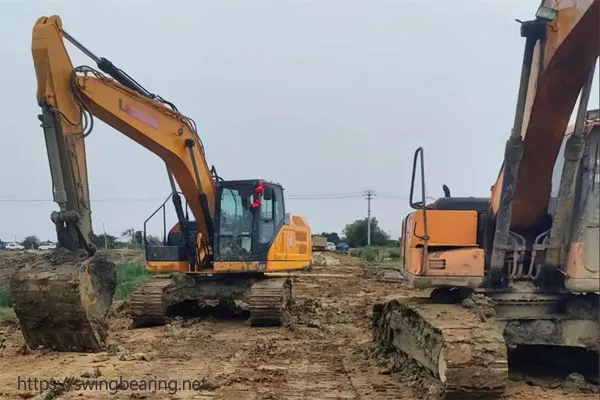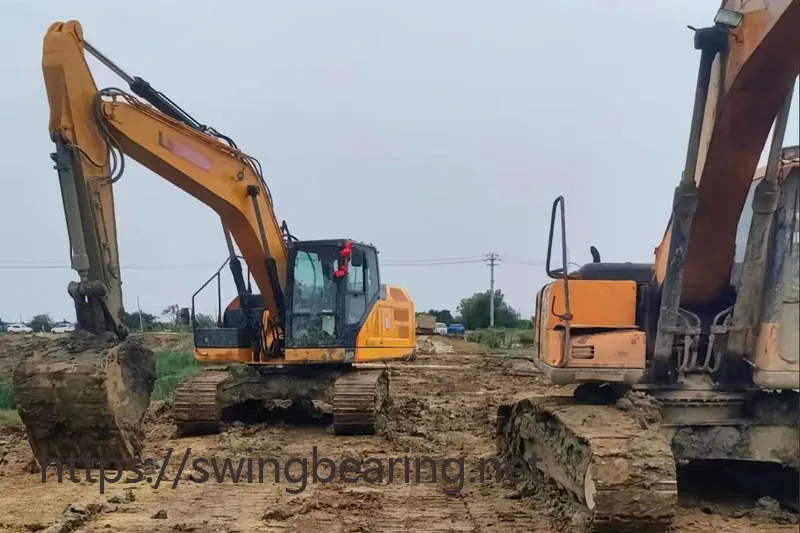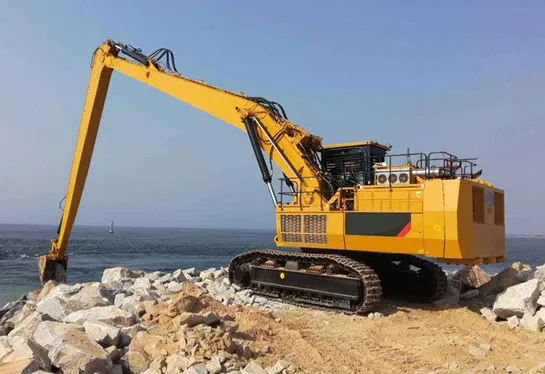
Excavators are essential pieces of equipment in the construction industry and beyond. Their versatility, power, and precision make them indispensable for a wide range of excavation, trenching, and material handling tasks. From small-scale projects to large-scale earthmoving operations, excavators play a crucial role in shaping our built environment and facilitating industrial processes.

rýpadlá
Excavators are indispensable in various construction and industrial applications. Their primary functions include:
Excavation: Digging trenches, foundations, and other excavations for buildings, roads, and pipelines.
Trenching:Creating narrow, deep trenches for utilities, drainage systems, and irrigation.
Material Handling:Loading and unloading trucks, stockpiling materials, and clearing debris.
Demolition: Breaking down structures, walls, and other obstacles.
Landscaping: Shaping terrain, creating ponds, and installing drainage systems.
Excavators are also used in mining, forestry, and agriculture for tasks such as extracting minerals, clearing land, and digging irrigation canals.
Excavators, the ubiquitous earthmoving machines, have earned a diverse array of nicknames and aliases over the years. These monikers, often rooted in regional dialects, industry jargon, and playful creativity, provide a fascinating glimpse into the culture and history of construction.
What is an Excavator?
An excavator, also known as a digger or backhoe, is a versatile construction machine designed for excavation, trenching, and material handling tasks. It consists of a hydraulically powered arm, a bucket, and a rotating platform mounted on a tracked or wheeled undercarriage.
Key Components and Their Roles:
The arm and boom are the primary components that extend and retract to reach the desired excavation depth and distance. The arm is connected to the boom, which in turn is attached to the rotating platform.
The bucket is the attachment at the end of the arm that performs the digging and material handling operations. It comes in various sizes and shapes, depending on the specific application.
The rotating platform houses the engine, hydraulic system, and operator’s cab. It allows the excavator to rotate 360 degrees, providing maximum flexibility and maneuverability.
The undercarriage supports the entire machine and provides stability during operation. It can be either tracked or wheeled, with tracked undercarriages offering better traction on uneven terrain.
The hydraulic system powers the excavator’s movements. It consists of Hydraulické čerpadlá, valves, and cylinders that control the extension and retraction of the arm, boom, and bucket.
The operator’s cab provides a safe and comfortable environment for the operator. It is equipped with controls for operating the excavator, as well as safety features such as roll-over protection structures (ROPS).
The counterweight is a heavy weight attached to the rear of the excavator to balance the weight of the arm and bucket during operation. It ensures stability and prevents the excavator from tipping over.
The origins of excavator aliases can be traced back to the early days of the industry. As these machines became increasingly common, workers began to assign them nicknames based on their appearance, function, or perceived personality. For instance, the term “backhoe” emerged from the distinctive backward-facing bucket used for digging trenches.

rýpadlo s dlhým dosahom
Excavator aliases vary significantly across regions. In the United States, they are commonly known as “hoes,” “diggers,” or “trackhoes.” In the United Kingdom, the term “digger” is more prevalent, while in Australia, they are often referred to as “exies.” These regional variations reflect the diverse linguistic and cultural backgrounds of the construction industry.
Excavators, essential pieces of heavy machinery in construction and engineering, are known by various names depending on their types, features, and regional preferences. Below is a detailed exploration of these common names, their significance, and regional terminology.
Within the construction industry, excavators have acquired a specialized vocabulary of slang terms. Operators may refer to them as “yellow iron,” “dirt movers,” or “clamshells,” depending on their size, function, or manufacturer. These terms serve as a shorthand for communicating specific types of excavators and their capabilities.
Beyond the practical and industry-specific aliases, excavators have also inspired a range of humorous and creative nicknames. Some operators have named their machines after famous people, such as “Elvis” or “Marilyn,” while others have opted for more whimsical names like “Digger Dan” or “Trench Monster.” These playful aliases reflect the camaraderie and sense of humor that often exists among construction workers.
As technology has advanced, so too have the names given to excavators. Early models were often referred to as “steam shovels” or “cable excavators,” reflecting their power source and operating mechanism. With the advent of hydraulics, the term “hydraulic excavator” became more common. Today, excavators are often classified by their size and capabilities, with names such as “mini excavator,” “compact excavator,” and “heavy excavator.”
Excavator aliases play a significant role in communication within the construction industry. They provide a convenient and often humorous way to refer to specific machines, especially when multiple excavators are working on a site. By using nicknames, operators can quickly and easily identify the equipment they need to use or coordinate with.
The diversity of excavator aliases is a testament to the rich history and culture of the construction industry. These nicknames reflect the regional, industry-specific, and personal experiences of the people who operate and work with these machines. Embracing this diversity enhances communication, fosters camaraderie, and adds a touch of humor to the often-challenging world of construction.
Excavator aliases are more than just nicknames; they are a reflection of the history, culture, and language of the construction industry. From the practical to the humorous, these monikers provide a glimpse into the lives of the people who build and shape our world. By understanding and embracing the diversity of excavator nomenclature, we can better appreciate the human element behind these powerful machines.
Understanding these terms and their regional variations helps in better communication and selection of the right type of machinery for specific tasks and environments. Whether referred to as a “digger” in Australia or a “mini excavator” in the US, these versatile machines play a vital role in construction and excavation projects globally.